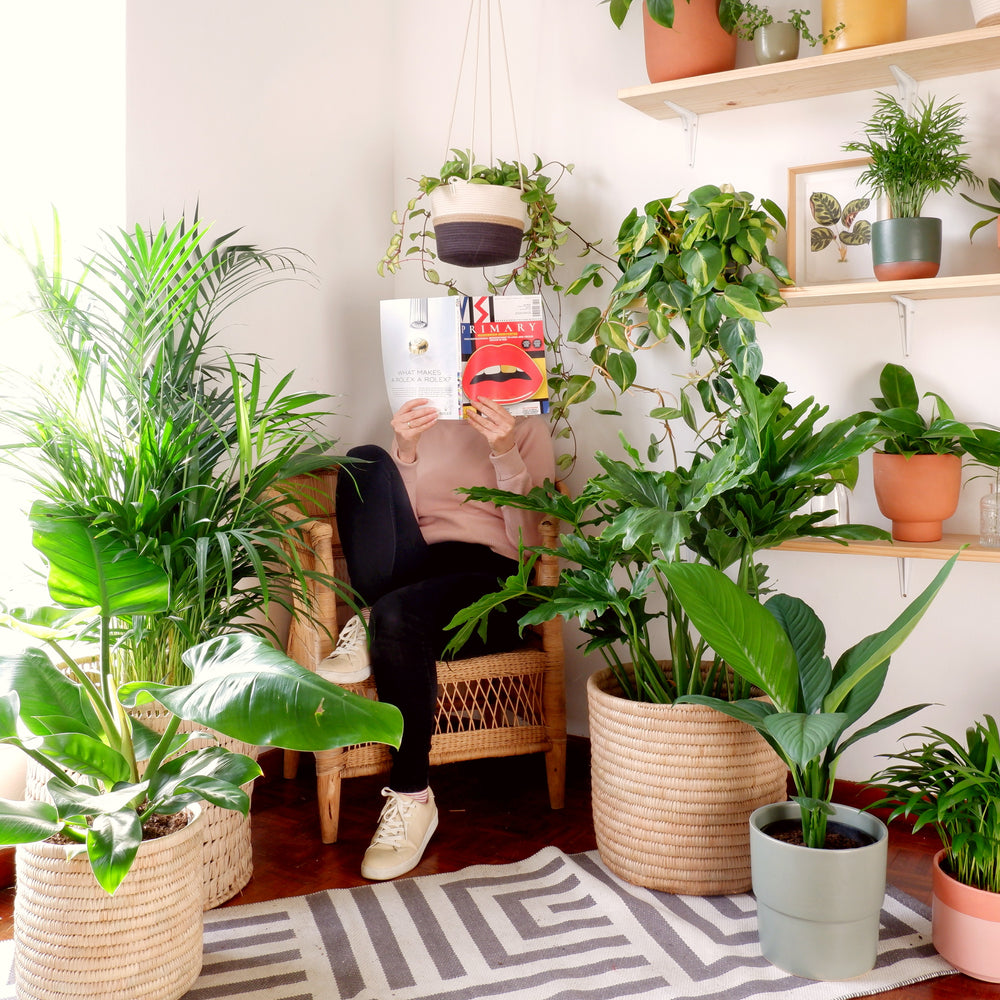5 Fiddle Leaf Fig Facts
The Fiddle Leaf Fig was named after the musical instrument, the fiddle, owing to the broad, large fiddle-shaped leaves that this plant produces. The Ficus Lyrata, has been named an ‘it’ plant as long ago as 2012, and is still as popular as ever! Design bloggers, Instagrammers and indoor plant lovers alike are ‘all over’ this beautifully stylish plant.
This glamourous indoor plant can often be found nestled between the glossy pages of home and design magazines, all over Pinterest, Blogs, Instagram and taking prime position in many a lounge, bedroom or home office spaces all over the world.
It would seem that the Fidddle Figs are evidence of a refined aesthetic and excellent taste, on the part of their owners. Thus, this potted plant has waltzed its way into the spotlight and seems to be enjoying the highly justifiable limelight.
5 Fiddle Leaf Facts
In this article, we'll discuss five little known facts about the Fiddle Leaf Fig Tree. Starting from this plant's origins to some basic care tips to keep this must-have indoor tree thriving.

1. THE ORIGIN OF THE FIDDLE LEAF FIG
Although this indoor plant can be found all over the world, the Fiddle Leaf Fig hails from Western Africa, particularly from Cameroon West to Sierra Leone. In its natural habitat, the Ficus Lyrata can be found in low land tropical rainforests, where it thrives in dense, warm, and wet surroundings.
This might seem like a stark contrast to your house or apartment, but that does not mean you can’t successfully nurture a piece of tropical African jungle in your home. With the right conditions and care, your Fiddle Leaf Fig will grow happily indoors and most likely thrive. Read up more on Caring for Fiddle Leaf Figs here.
2. THE INDOOR FIDDLE FIG VS THE OUTDOOR FIDDLE FIG
As an indoor plant, the Fiddle Leaf does not bear any fiddles (sadly), fruit, or flowers. Unlike the common fig (Ficus Carica), the fruit that this tree bares, when grown outdoors, is not edible. Though, the fig fruits of these two trees do look fairly similar in size and shape.

When grown outdoors, the Fiddle Fig can grow up to approximately 15m in height, whilst indoors it can reach heights of around 3m. The size, shape and height of the indoor Fiddle Leaf Fig can often be controlled by pot size and careful pruning.

3. IT KILLS OTHER PLANTS
Yes, it’s true – but only in the wild. The Ficus Lyrata will often start its life growing on the surface of another tree. As it grows, it will send down roots to the ground which surrounds and eventually strangle the host tree.
Fortunately, not all trees have to start out this way. Having been reared in a nursery, the Fiddle Leaf that you will have in your home almost certainly has not killed another plant to establish itself.

4. IT 'OWNS' A DECADE
“Every era has its trendy houseplant. In the 1950s and ’60s, it was the African violet. In the ’70s, it was spider plants trailing out of macramé hangers. In the ’80s and early ’90s, it was the potted ficus. The aughts (‘00s) gave rise to mossy plants in terrariums and glass jars.” Steven Kurutz – The New York Times

Open any reputable home décor or design magazine or punch ‘indoor plant’ into Pinterest or Google and you will most likely spot them, often potted in beautiful planters ranging from hand-woven baskets to minimal white modern pot covers.
The reason designers and homeowners alike love them is that they are sculptural, large, and complement a wide range of interior styles, from bohemian chic to industrial and even minimalist. Making it the perfect all-round choice.

5. IT DOESN'T LIKE TO MOVE AROUND MUCH
The Fiddle Leaf can make for a wonderful house plant, adding a bold statement or brightening up any dull corner in your home. Take note though that they may be finicky and can take some time to adapt when placed in a new environment.
But, before sounding the alarm, make sure that the Ficus Lyrata has had time to adapt to its new home. This can take anywhere from a month to a couple of seasons. Read up more on Caring for Fiddle Leaf Figs here.
Below are a few tips to keep your fiddle fig happy and healthy:
-
Water – be sure to give your Ficus Lyrata full and regular watering whilst avoiding overwatering. It is best to keep the potting soil evenly moist and to only water, once the potting mix has reached near dryness.
- Mist – mist the leaves regularly to encourage humidity. Other less taxing options to raise humidity, include placing your plant on a pebble tray.
- Dust – wipe down the massive leaves to remove surface dust. This assists your plant in receiving optimal light to its foliage, which will improve your plants health and happiness.
- Light – bright indirect is best to keep this plant looking good, however, a little soft morning light can be highly beneficial too.
- Fertilize – Less is more when feeding this particular houseplant. It is recommended to feed with a diluted fertilizer more often, to help sustain and keep your Fiddle Leaf Fig growing strong.
6. BONUS FACT: DID YOU KNOW YOU CAN GET ONE DELIVERED TO YOUR DOOR?
This is also true.
While you spend hours scrolling through incredible pictures of indoor plants on Instagram and Pinterest, we are busy sourcing healthy, ready-to-ship fiddle leaf figs that can be delivered straight to your door, we deliver countrywide in South Africa. Get your fiddly friend here today.








Leave a comment